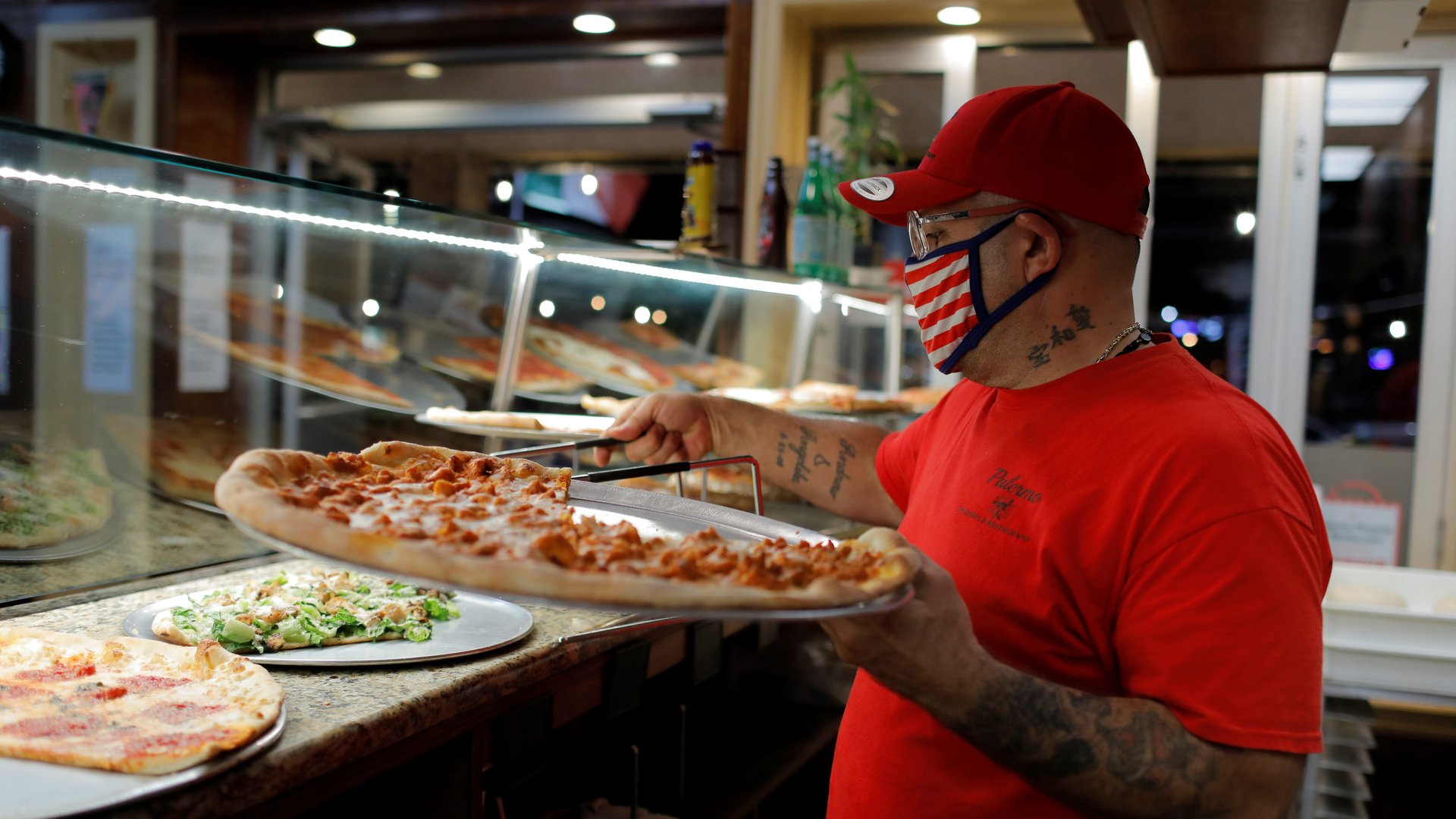Why the US isn’t going into a Covid-19 lockdown
Covid-19 is surging all across the US. On Nov. 12, the country hit 163,000 new cases in one day, the most recent in a series of grim records the country has set this week. Covid-19 is now the third-leading cause of death in the US.


Covid-19 is surging all across the US. On Nov. 12, the country hit 163,000 new cases in one day, the most recent in a series of grim records the country has set this week. Covid-19 is now the third-leading cause of death in the US.
In a press conference on Nov. 13, president Donald Trump continued to reject national action to slow the spread. Though he noted that cases in the US appear to be rising (he falsely said this was because of increased testing), he said that his administration would not be implementing a lockdown. “There won’t be a necessity,” he said. “Lockdowns cost lives, a lot of problems. The cure cannot be, you gotta remember, cannot be worse than the problem itself.”
In the absence of national leadership, cities are coming up with their own plans. But despite higher case numbers than preceded many of the lockdowns that rippled across the country in March, many of them are resisting full-blown stay-at-home orders and business shutdowns.
New York City, hit hardest in the earliest stages of the pandemic, is considering closing its public schools as businesses stay open (though as of this week, bars, restaurants, and gyms must close by 10 pm). On Nov. 2, Massachusetts started a stay-at-home advisory between 10 pm and 5 am, along with an expanded mask mandate and a business curfew starting at 9:30 pm. Illinois’ governor has warned of a new lockdown, while Chicago’s mayor announced a stay-at-home advisory starting Nov. 16. (There are a few exceptions—on Nov. 13 Oregon’s governor implemented a two-week shutdown of gyms and indoor dining, while New Mexico’s issued a two-week shelter in place order.)
Compare these piecemeal measures to those employed by Europe’s leaders. France has been in a four-week lockdown since Oct. 29; the UK’s began two days later. In Germany, bars, clubs, and movie theaters will be closed, and restaurants limited to delivery and takeout, for the month of November and possibly longer. Spain implemented a curfew between 11 pm and 6 am. Belgium closed non-essential stores, while Greece implemented lockdowns in one city and two regions.
What’s behind the difference in strategy? Economics play a major role. Lockdowns cause significant economic distress, particularly to small businesses and their workers, but government support in Europe has at least somewhat eased that burden. Government bodies in the UK and the European Union have offered business loans, tax relief, and cash grants, while also supporting workers through wage subsidies.
The US government, meanwhile, has done significantly less. An initial flurry of legislation opened up a temporary loan program for some businesses, increased the amount of unemployment money available by $600 per week, and sent 90% of taxpayers a $1,200 check. But these measures were designed to be temporary. The loan program ended in August, the unemployment boost expired on July 31, and the check was a one-off. A second bill isn’t likely until 2021.
Cities and states are then left with an impossible dilemma: Risk people’s health by letting business continue as usual, or quash the slowly-recovering economy with another lockdown?
“Public health and safety must be paramount but restaurants are in a dire financial situation and any further limitations on their operations need to be coupled with financial support for these small business owners and the workers,” says Andrew Rigie, the executive director of the NYC Hospitality Alliance, which includes restaurants and bars.
The in-between measures implemented by some state and local governments, such as curfews and partial lockdowns, are an attempt to have it both ways. But without economic relief, businesses fear the worst—and as Americans travel to visit family during the upcoming Thanksgiving holiday, public health officials are deeply concerned that cases will continue to rise.